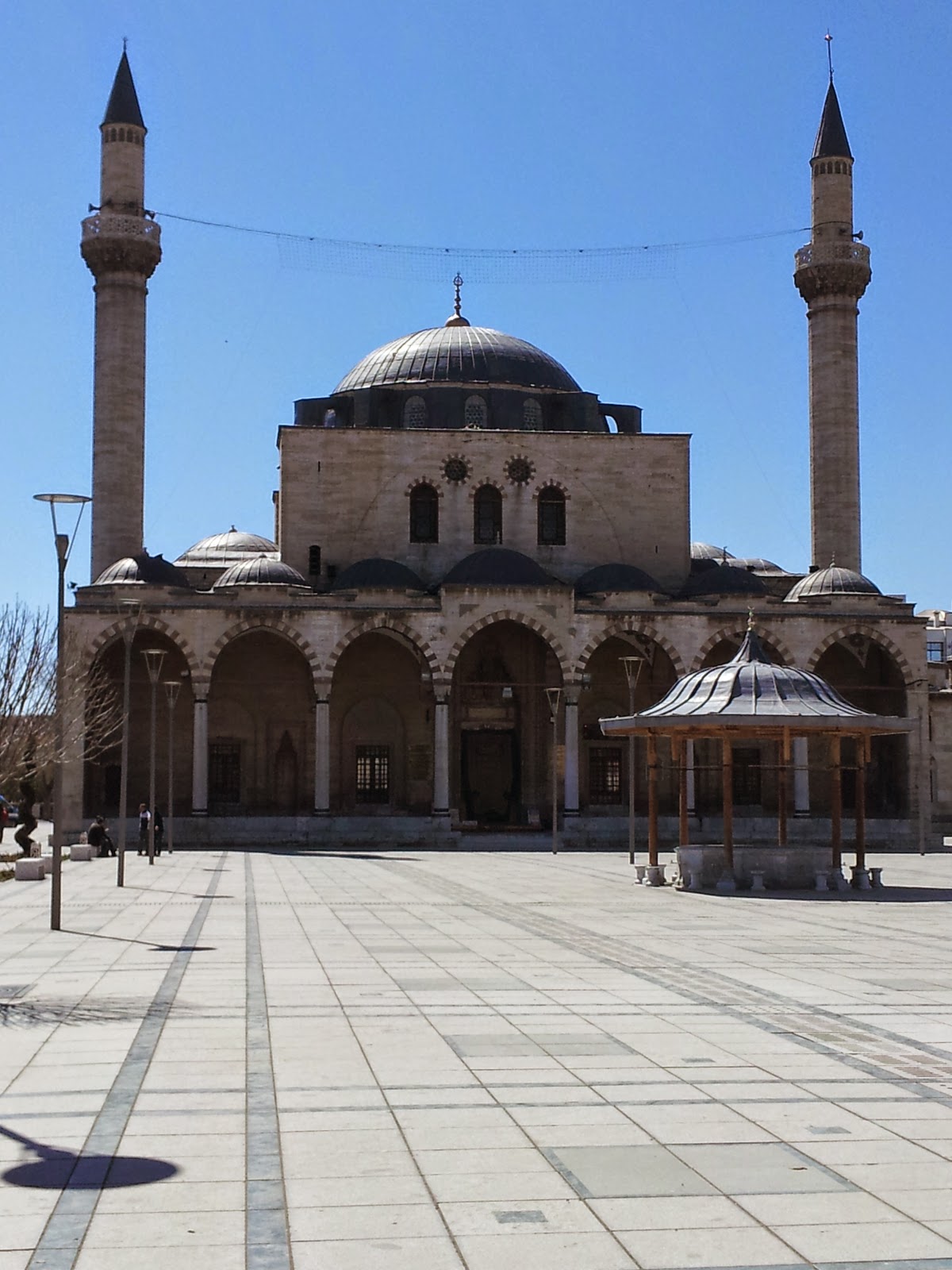Once in Izmir, we retrieved our reserved rental car from the Izmir airport. The train station and airport are connected by IZBAN - their BART - what a novel and convenient idea. We were on the road to Ephesus before noon. As the #1 tourist destination in Turkey outside Istanbul, we met up with the tourists in Ephesus. Lots of Chinese, Japanese, French, and Germans. Ephesus is quite a large archaeological sight, with excavation and restoration work ongoing since the 1860s. The most impressive sights were the theatre, the two agora, and the Celsus library. Here are some pictures to give you an idea of the site.
Ephesus is the burial site of St. John - so we stopped there to see that.
We didn't have specific accommodations in mind, so we drove down the road and pulled in when we were ready to stop. Monday night we stayed in a little town south of Ephesus and Tuesday night we were in a town on the coast west of Bodrum. We stopped in Didum and Bodrum to check out those towns. Bodrum has an old Crusader fort similar to the ones I visited on Cyprus.
Ephesus and Bodrum were both home to one of the seven wonders of the ancient world - in Ephesus, the Temple of Artemis and in Bodrum, the Mausoleum at Halicarnassus. Not much of either of these wonders exists anymore. There's a great opportunity for Google Glass and augmented reality to give a visitor an idea of these two structures. We did, however, find the Temple of Apollo in Didum and managed to climb all around what's left of that structure, as you can see.























































